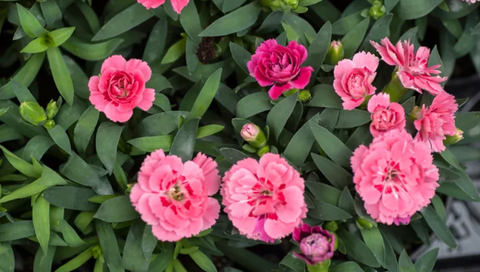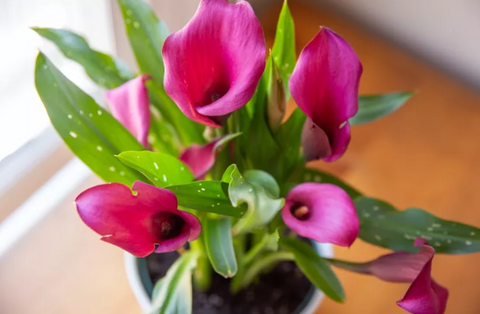Introduction
Peonies are not just flowers; they are a symbol of elegance, grace, and beauty. Planting them in your garden requires more than just digging a hole and placing them in the ground. In this comprehensive guide, we'll walk you through the steps to plant and care for peonies, ensuring your garden flourishes with these stunning blooms.The following content also has some reference value for raised garden beds.

Understanding Peonies
Peonies, belonging to the genus Paeonia, are perennial flowering plants cherished for their large, showy blooms and lush foliage. Understanding the intricacies of peony varieties is crucial for successful cultivation in your garden sanctuary.
Selecting the Right Variety
When choosing peonies for your garden, consider factors such as plant type, color preferences, and climate suitability.
● Herbaceous vs. Tree Peonies: Herbaceous peonies die back to the ground in winter, while tree peonies retain woody stems year-round.
● Color and Bloom Time Considerations: Select a variety that complements your garden aesthetic and offers a range of bloom times for extended flowering seasons.
● Disease Resistance and Climate Suitability: Opt for varieties resistant to common peony diseases and well-suited to your climate zone for optimal growth and performance.
Planning Your Garden Layout
Before planting peonies, assess your garden's sunlight exposure, soil conditions, and spacing requirements to create an ideal environment for their growth.
● Sunlight Requirements: Peonies thrive in full sun but can tolerate partial shade in warmer climates.
● Soil Conditions and pH Levels: Ensure well-draining soil with a pH level between 6.5 and 7.5, amending as necessary to improve soil structure and fertility.
● Spacing Considerations: Allow adequate spacing between peony plants to prevent overcrowding and promote air circulation, reducing the risk of disease.
Preparing the Soil
Prepare the soil thoroughly before planting peonies to provide a nutrient-rich foundation for healthy growth and vibrant blooms.
● Soil Testing: Conduct a soil test to assess pH levels and nutrient deficiencies, adjusting soil amendments accordingly.
● Soil Amendments: Incorporate organic matter such as compost, well-rotted manure, or peat moss to improve soil texture and fertility.
● Incorporating Organic Matter: Work organic matter into the soil to enhance moisture retention, nutrient availability, and microbial activity, fostering robust root development.

Planting Peonies
Plant peonies following proper timing and spacing guidelines to ensure successful establishment and prolific flowering.
● Timing Considerations: Plant bare-root peonies in early fall or early spring for optimal root development before the onset of hot weather.
● Digging the Planting Hole: Dig a hole twice as wide and deep as the peony's root system, ensuring ample room for root expansion.
● Planting Depth and Spacing: Position peony roots with the eyes facing upwards and cover with soil, leaving no more than 1-2 inches of soil above the eyes. Space plants 3 to 4 feet apart to allow for mature growth.
● Watering Techniques: Water newly planted peonies thoroughly to settle the soil and promote root establishment, ensuring consistent moisture throughout the growing season.
Caring for Peonies
Maintain a regular care routine to support the health and vitality of your peony plants, including proper watering, fertilization, and pest management.
● Watering Schedule: Provide consistent moisture, watering deeply once a week during dry spells to ensure adequate hydration, especially during the blooming season.
● Fertilizing Regimen: Apply a balanced fertilizer in early spring and again after flowering to provide essential nutrients for vigorous growth and prolific blooms.
● Pest and Disease Management: Monitor plants regularly for signs of pests and diseases, taking proactive measures such as hand-picking pests and applying organic fungicides as needed to prevent damage and maintain plant health.
Supporting Your Peonies
Support tall peony varieties to prevent stems from bending or breaking under the weight of their large blooms.
● Staking Tall Varieties: Install sturdy stakes or supports around peony plants to provide structural support and prevent flopping.
● Providing Structural Support: Use cages or hoops to support sprawling peony varieties, keeping stems upright and preventing damage to delicate blooms.
● Mulching for Moisture Retention: Apply a layer of mulch around peony plants to conserve moisture, suppress weed growth, and maintain even soil temperatures, promoting healthy root development and blooming.
Pruning and Deadheading
Pruning is essential for maintaining the health, shape, and blooming performance of peony plants.
● Importance of Pruning: Prune peonies annually to remove dead or diseased foliage, improve air circulation, and promote new growth.
● Deadheading for Prolonged Blooming: Remove spent flowers promptly to encourage the production of new buds and extend the blooming season.
● Pruning Techniques: Use clean, sharp pruners to make angled cuts just above a healthy leaf node or bud, taking care not to damage emerging shoots or flower buds.
Winter Care
Prepare peonies for winter dormancy to protect them from freezing temperatures and harsh weather conditions.
● Mulching for Insulation: Apply a thick layer of mulch around peony plants in late fall to insulate soil and protect roots from frost damage.
● Protecting Against Frost: Cover peony plants with frost cloth or burlap during periods of extreme cold to shield delicate foliage and buds from freezing temperatures.
● Cutting Back Foliage: Trim back peony foliage to ground level after the first hard frost to remove diseased or damaged leaves and reduce the risk of overwintering pests and diseases.
Dividing and Transplanting
Divide overcrowded peony clumps every few years to rejuvenate plants and promote better flowering.
● Signs of Overcrowding: Watch for signs of overcrowding, such as reduced flowering, smaller blooms, or crowded growth habits, indicating the need for division.
● Dividing Peony Clumps: Use a sharp knife or spade to carefully divide peony clumps into smaller sections, ensuring each division has several healthy eyes and roots.
● Transplanting Techniques: Replant divided peonies in well-prepared soil, following the same planting and care instructions as for new plants, to facilitate successful establishment and future blooming.
Dealing with Common Peony Problems
Peonies are relatively low-maintenance plants, but they may encounter occasional issues such as fungal diseases, pests, and environmental stressors. Here are some common problems and their solutions:

● Botrytis Blight: Remove affected foliage, improve air circulation, and apply fungicides as needed to control fungal infections.
● Peony Wilt: Cut back infected stems to ground level, avoid overhead watering, and remove and destroy affected plant debris to prevent spread.
● Ants on Peony Buds: Ants are attracted to the sweet sap on peony buds but do not harm the plants. Rinse buds with water to remove ants before bringing blooms indoors.
● Root Rot: Improve soil drainage, avoid overwatering, and plant peonies in well-draining soil to prevent root rot.
Conclusion
In conclusion, planting and caring for peonies is a rewarding endeavor that brings beauty, elegance, and fragrance to your garden throughout the growing season. By following these step-by-step guidelines and incorporating proper planting techniques, soil preparation, and ongoing care, you'll create a stunning peony garden that delights the senses and enriches the soul for years to come. Whether you're a novice gardener or a seasoned enthusiast, the timeless allure of peonies is sure to captivate your heart and inspire your green thumb.









